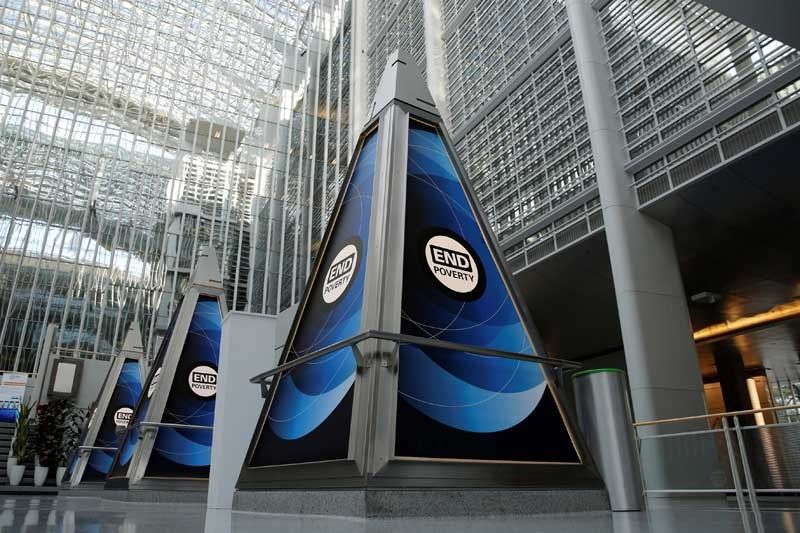World Bank lowers Philippines growth outlook

MANILA, Philippines — The World Bank Group is has lowered its growth forecast for the Philippines this year to 6.4 percent from the earlier 6.5 percent estimate due to a number of domestic and external factors such as the delay in the approval of the national budget and the impact of the El Niño weather phenomenon.
“The Philippines’ growth outlook remains positive, with the economy projected to grow at 6.4 percent in 2019 and 6.5 percent in both 2020 and 2021,” World Bank senior economist Rong Qian said in a press briefing yesterday.
“These estimates are lower than the projected 6.5 percent growth in 2019 and 6.6 percent in 2020, reflected in the January edition of the Global Economic Prospects,” she added.
Qian attributed the lowered forecast to the delay in the approval of the 2019 national budget as well as the pre-election spending ban on new public construction project, as these factors would result in a slowdown in public investment in the first half of the year.
The bank economist, however, said this is expected to recover in the second half of the year, assuming that the budget gets approved very soon.
Another domestic risk is the reenactment of the 2018 budget as no new programs and projects will receive funding since budget allocations are based on the appropriations made in the previous year’s budget.
“As a result, the limited public spending may negatively impact the Philippines’ growth prospects for 2019,” Qian said.
Socioeconomic Planning Secretary Ernesto Pernia earlier said operating on a reenacted budget for the entire year may slow down the economy’s growth to 4.2 percent.
While a weaker public investment is seen in the first half of the year, Qian said private consumption growth is expected to accelerate in 2019 as inflation declines and election activities provide an added boost.
In 2018, the country’s annual private consumption growth declined to 5.6 percent from 5.9 percent in 2017 due to high inflation.
However, the World Bank said it expects this to rebound to 5.9 percent in 2019 and six percent in 2020 due to declining inflation and the continued job generation in the economy.
In addition, remittances are expected to remain steady as new employment opportunities for Filipinos become available in countries like Japan, Germany and Poland, further fueling consumption.
“Export growth is likely to remain weak, as global growth and trade activities are projected to moderate in the medium term,” Qian added.
Qian said external risks also remain high deriving from heightened uncertainty generated by the US-China trade dispute, the ongoing policy normalization in advanced economies, and tightening global financial conditions.
Meanwhile, the World Bank economist also cited the potential impact of El Niño in agriculture production as another risk that may negatively impact the economy’s growth.
“In particular, an intensified El Niño may lead to food supply constraints, affecting the poor and vulnerable the most as they are spending a relatively larger proportion of their income on food,”Qian said.
She said the Philippines should prioritize prudently managing fiscal and current account balances and preserving consumer and business confidence in the short term to sustain the country’s rapid and more inclusive growth.
“As government ramps up spending to implement its inclusive growth agenda, it would need complementary reforms to increase revenue and ensure that the country’s finances are sound and sustainable,” Qian said.
In the long term, the World Bank said the country needs to focus on raising investments in human capital such as people’s health, nutrition, education and skills, to speed up inclusive growth or growth that benefits the poor and most vulnerable.
“The Philippines needs to address the high rates of malnutrition among children, improve learning, and the quality of healthcare, to unleash the full productive potential of Filipinos,” said Gabriel Demombynes, program leader for human development for Brunei, Malaysia, Philippines and Thailand.
“The country needs to focus on these challenges while undertaking reforms for improving the country’s capacity to create more high-paying jobs and speed up poverty reduction,” he added.
The World Bank stressed that child malnutrition in the Philippines is high, emphasizing that one in three children under the age of five is stunted—the principal marker of malnutrition—and stunting rates have been stagnant for more than a decade.
It added that malnutrition is severe among children in poor households, noting that children who grow up in poor households are often inadequately nourished and thus more likely to suffer from limited cognitive development.
“As result, they may struggle to learn in school, are at high risk of dropping out early, and face an increased likelihood of poverty in adulthood,” the World Bank said.
- Latest
- Trending


























